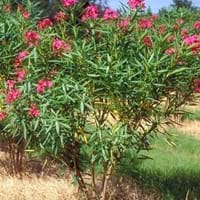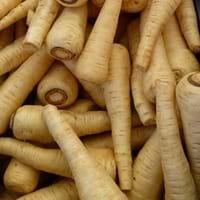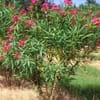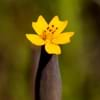Life Span
Perennial
Biennial and Perennial
Type
Flowering Plants, Shrub
Vegetable
Origin
Southwest Asia
Europe, Western Asia
Types
Calypso, Petite Salmon, Petite Pink
-
Habitat
dry rocky watercourses, Riverbanks
waste ground, wastelands
USDA Hardiness Zone
9-11
4-9
Sunset Zone
-
A1, A2, A3, H1, H2, 1a, 1b, 2a, 2b, 3a, 3b, 4, 5, 6, 7, 8, 9, 10, 11, 12, 13, 14, 15, 16, 17, 18, 19, 20, 21, 22, 23, 24
Habit
Bushy, Evergreen
Rosette/Stemless
Flower Color
Cream, Creamy Yellow, Pink, Purple, Red, White
Yellow
Flower Color Modifier
Bicolor
Bicolor
Fruit Color
-
Brown, Black
Leaf Color in Spring
Dark Green
Green
Leaf Color in Summer
Dark Green
Green
Leaf Color in Fall
Dark Green
Green
Leaf Color in Winter
Gray Green
-
Leaf Shape
Long linear and narrow
Pinnate
Plant Season
Fall, Spring
Summer
Sunlight
Full Sun, Partial shade
Full Sun
Growth Rate
Medium
Medium
Type of Soil
Well drained
Loam
The pH of Soil
Neutral, Slightly Alkaline
Neutral
Soil Drainage
Well drained
Well drained
Tolerances
Drought
Drought
Where to Plant?
Ground, Pot
Ground, Pot
How to Plant?
Layering, Seedlings, Stem Planting
Seedlings
Plant Maintenance
Low
Medium
Watering Requirements
Water less during winter, Water more in summer
Average Water Needs, Do Not over Water, Keep the ground moist but not water-logged
In Summer
Lots of watering
Lots of watering
In Spring
Moderate
Moderate
In Winter
Average Water
Average Water
Soil pH
Neutral, Slightly Alkaline
Neutral
Soil Type
Well drained
Loam
Soil Drainage Capacity
Well drained
Well drained
Sun Exposure
Full Sun, Partial shade
Full Sun
Pruning
Prune in the late winter or spring, Remove shoots
Remove damaged leaves, Remove dead branches, Remove dead leaves
Fertilizers
All-Purpose Liquid Fertilizer, fertilize every 2-3 weeks while growing, Fertilize in early spring, Potassium
All-Purpose Liquid Fertilizer
Pests and Diseases
Leaf spot, Mealybugs, Red blotch, Red spider mite, Scale, Scale insects
Aphids, Armyworm, Cutworms, Downy mildew, Pitch canker, Red blotch
Plant Tolerance
Drought
Drought
Flower Petal Number
Single
-
Fragrant Bark/Stem
No
Yes
Foliage Texture
Medium
Fine
Foliage Sheen
Matte
Matte
Attracts
Mealybugs
Butterflies
Allergy
Phytodermatitis, Rash, Toxic
Stomach burn
Aesthetic Uses
Cottage Garden, Showy Purposes, Used in parkland
-
Beauty Benefits
-
Blood purifying, Good for skin
Environmental Uses
Air purification
Air purification
Medicinal Uses
Asthma, Cancer, Cardiotonic, Diabetes, epilepsy, Scabies
Aphrodisiac
Part of Plant Used
Flowers, Leaves
Root
Other Uses
Used as Ornamental plant
Food for animals, Used as a nutritious food item
Used As Indoor Plant
No
Yes
Used As Outdoor Plant
Yes
Yes
Garden Design
-
Edible, Herb, Vegetable
Botanical Name
Nerium
PASTINACA sativa
Common Name
Oleander, Nerium Oleander
Parsnip
In German
Oleander
Pastinake
In French
laurier-rose
Panais
In Spanish
Adelfa
Chirivía
In Greek
Πικροδάφνη
Είδος δαυκίου
In Portuguese
oleandro
cherivia
In Polish
Oleander
Pasternak
In Latin
Cleander
parsnip
Phylum
Magnoliophyta
Magnoliophyta
Class
Magnoliopsida
Magnoliopsida
Order
Gentianales
Apiales
Family
Apocynaceae
Apiaceae
Clade
Angiosperms, Asterids, Eudicots
Angiosperms, Asterids, Eudicots
Subfamily
Apocynoideae, Hippocastanoideae
-
Difference Between Oleander and Parsnip
If you are confused whether Oleander or Parsnip are same, here are some features about those plants to help you choose better. Many people think that these two plants have the same characteristics, but one can see Oleander and Parsnip Information and learn more about it. Fertilizers required for proper growth of Oleander are All-Purpose Liquid Fertilizer, fertilize every 2-3 weeks while growing, Fertilize in early spring and Potassium, whereas for Parsnip fertilizers required are All-Purpose Liquid Fertilizer. Hence, one should know the basic difference between Oleander and Parsnip if you are planning to have them in your garden to enhance its beauty.
<
Flowering PlantsImportance of Oleander and Parsnip
Want to have the most appropriate plant for your garden? You might want to know the importance of Oleander and Parsnip. Basically, these two plants vary in many aspects. Compare Oleander and Parsnip as they differ in many characteristics such as their life, care, benefits, facts, etc. Every gardener must at least have the slightest clue about the plants he wants to plant in his garden. Compare their benefits, which differ in many ways like facts and uses. The medicinal use of Oleander is Asthma, Cancer, Cardiotonic, Diabetes, epilepsy and Scabies whereas of Parsnip is Aphrodisiac. Oleander has beauty benefits as follows: while Parsnip has beauty benefits as follows: .
Compare Facts of Oleander vs Parsnip
How to choose the best garden plant for your garden depending upon its facts? Here garden plant comparison will help you to solve this query. Compare the facts of Oleander vs Parsnip and know which one to choose. As garden plants have benefits and other uses, allergy is also a major drawback of plants for some people. Allergic reactions of Oleander are Phytodermatitis, Rash and Toxic whereas of Parsnip have Stomach burn respectively. Having a fruit bearing plant in your garden can be a plus point of your garden. Oleander has no showy fruits and Parsnip has no showy fruits. Also Oleander is flowering and Parsnip is not flowering . You can compare Oleander and Parsnip facts and facts of other plants too.





